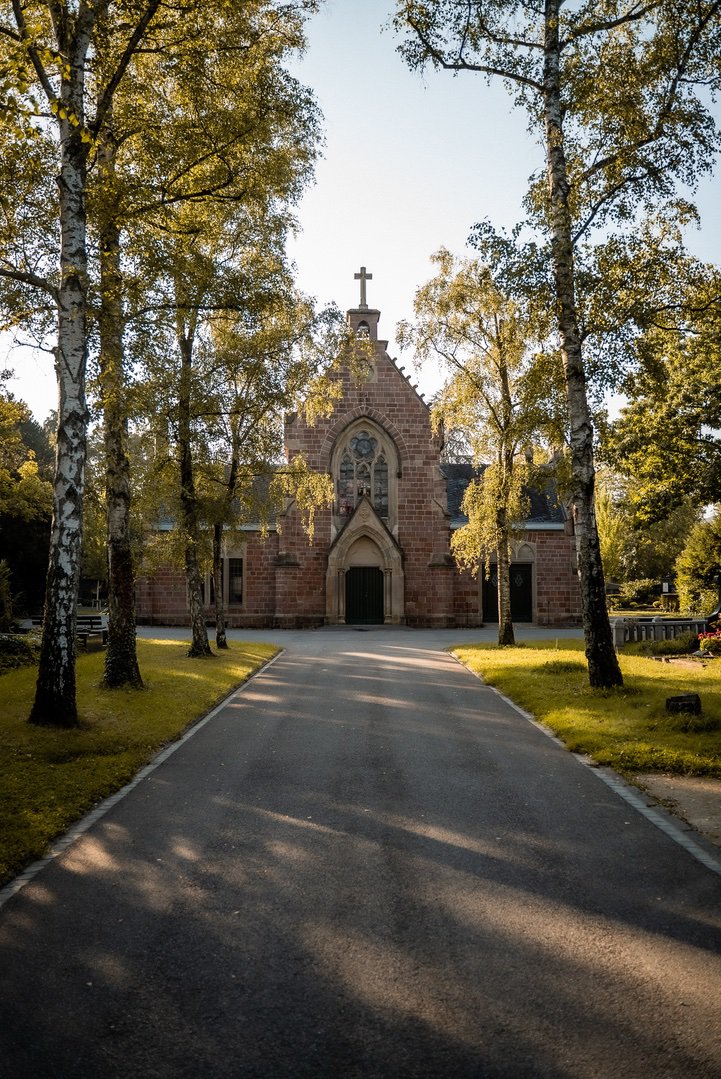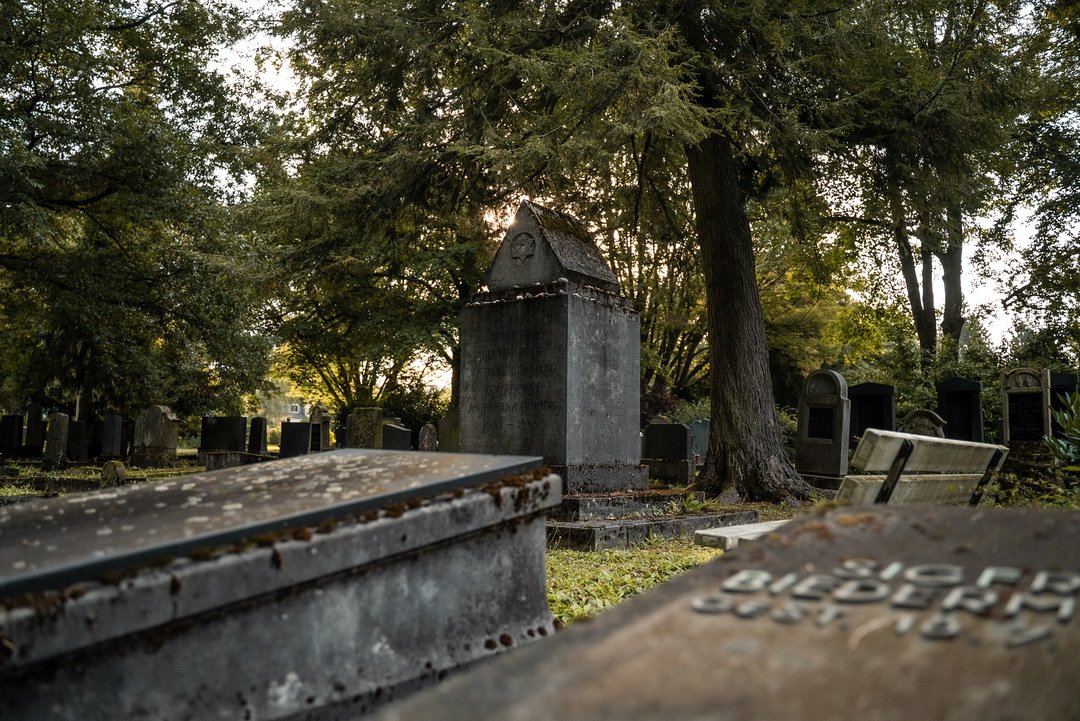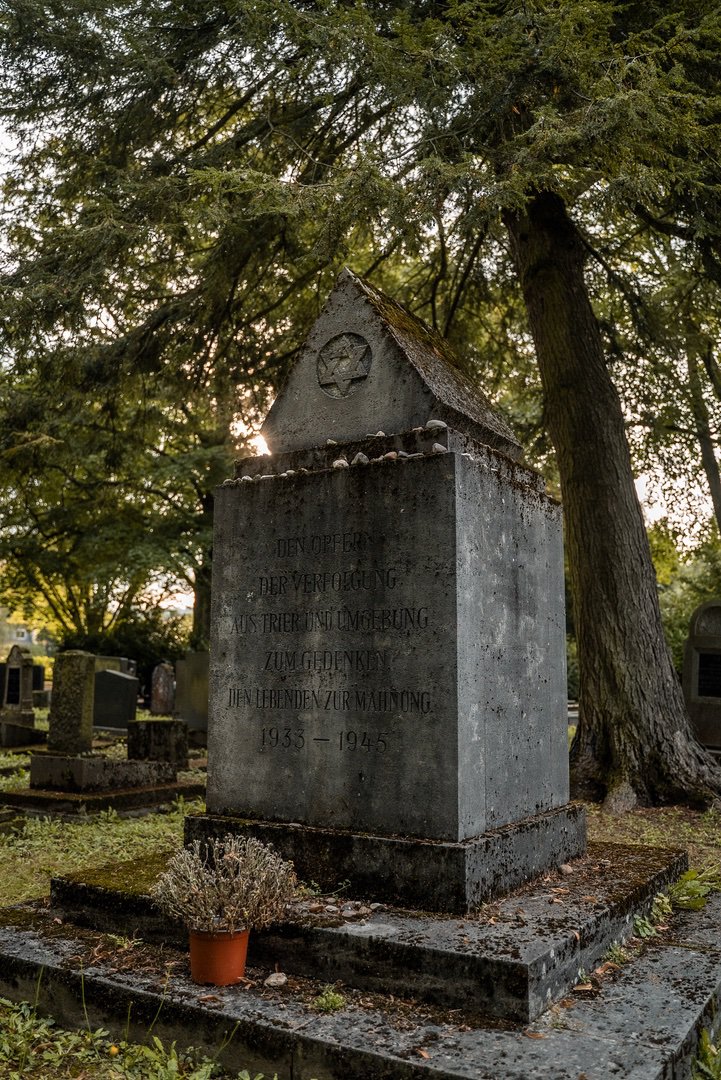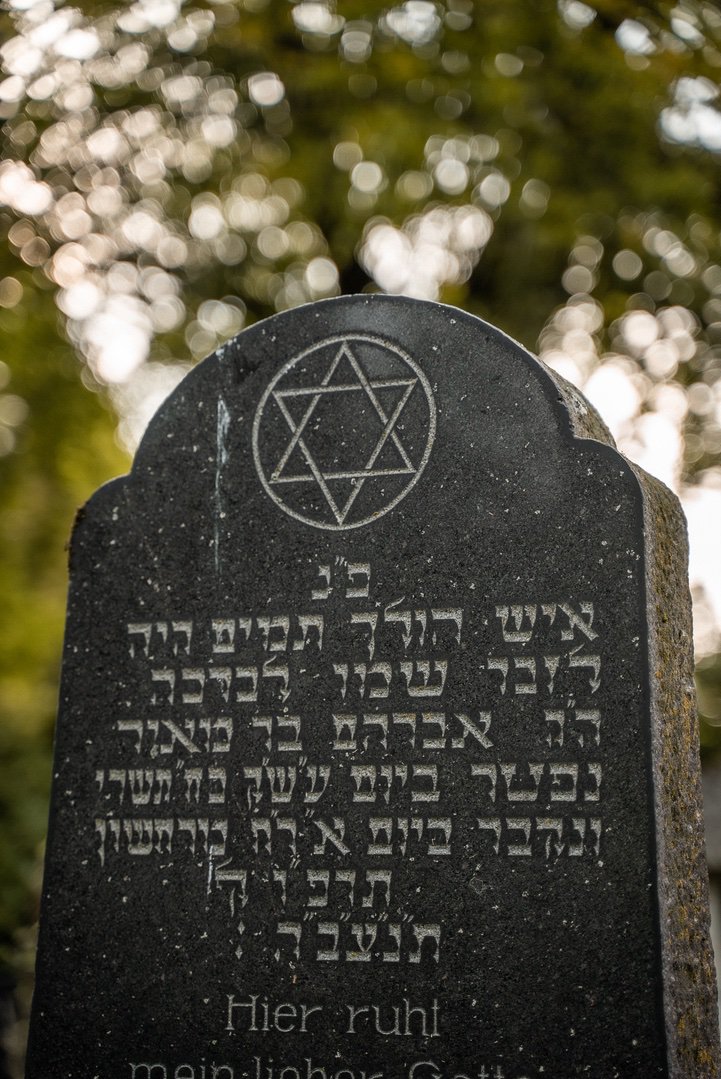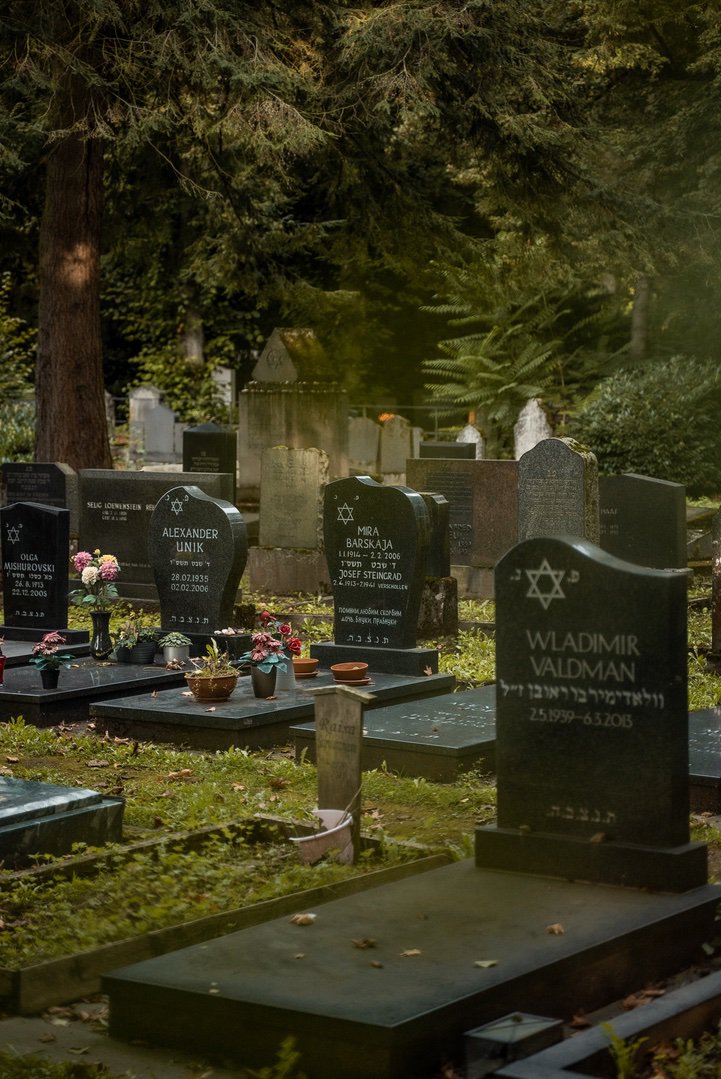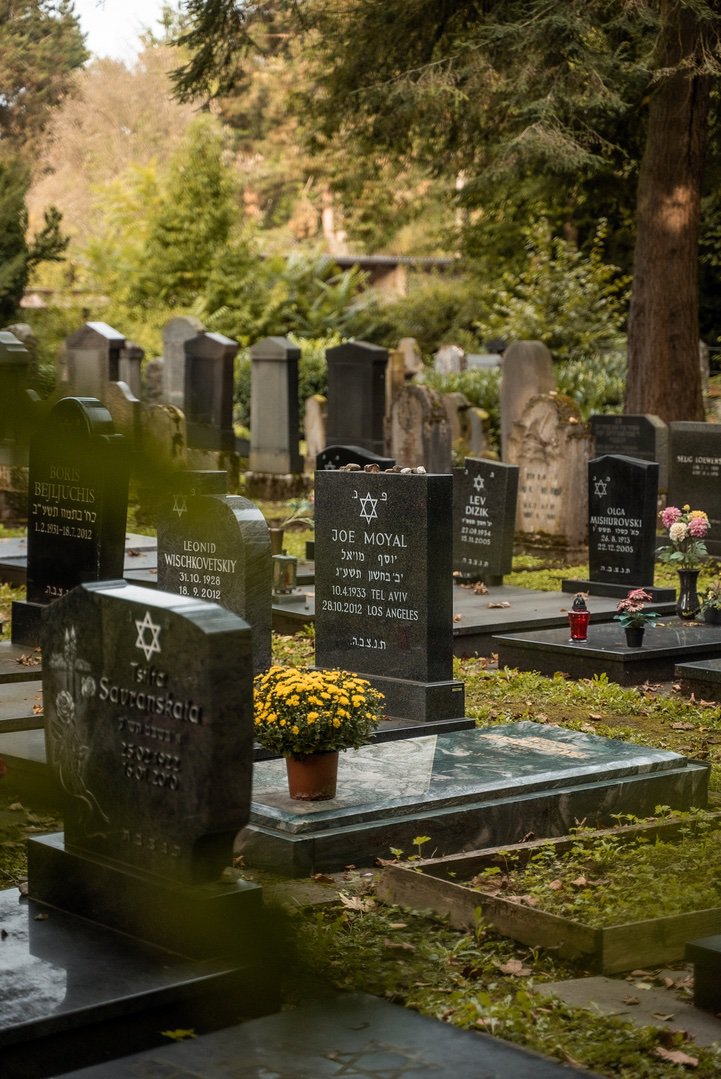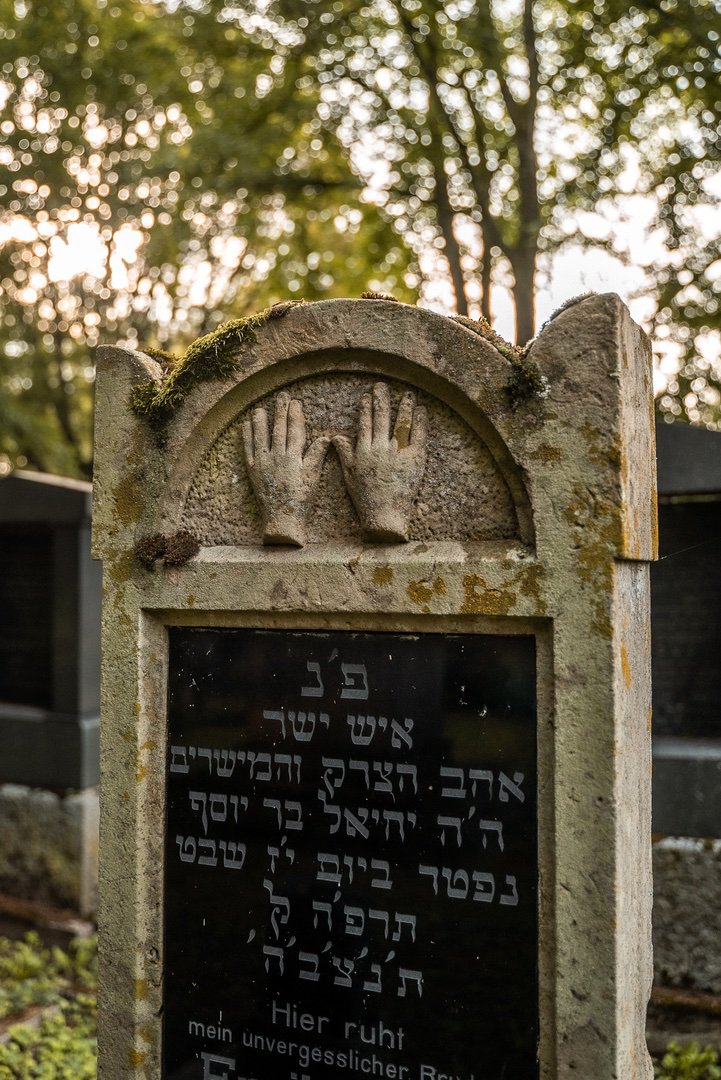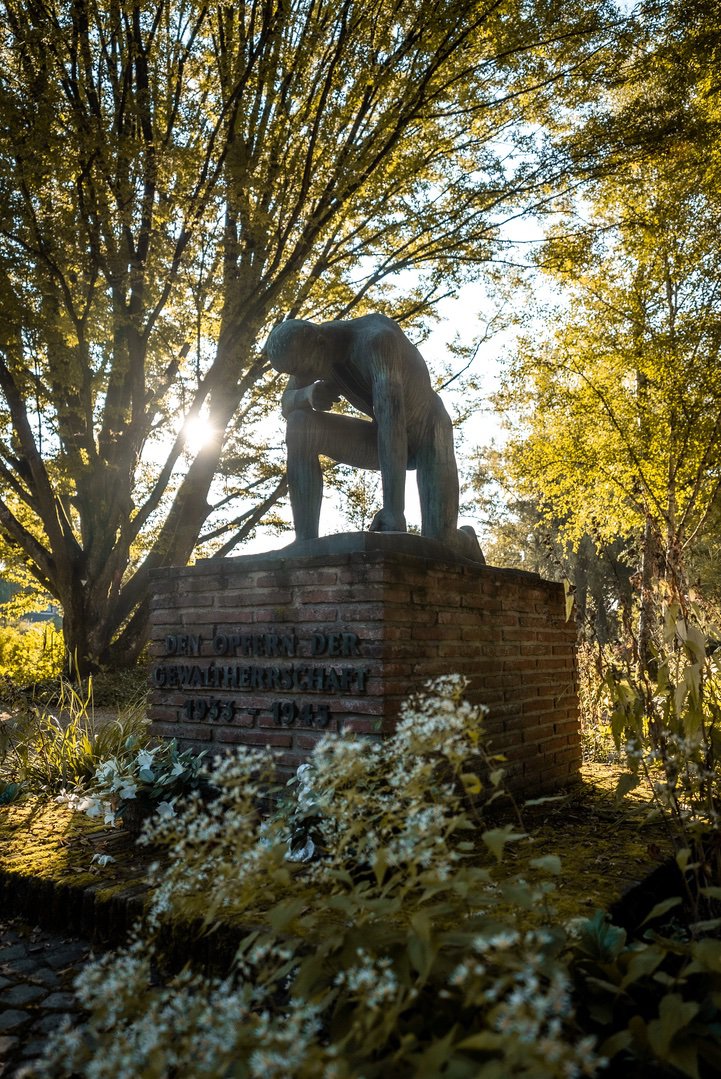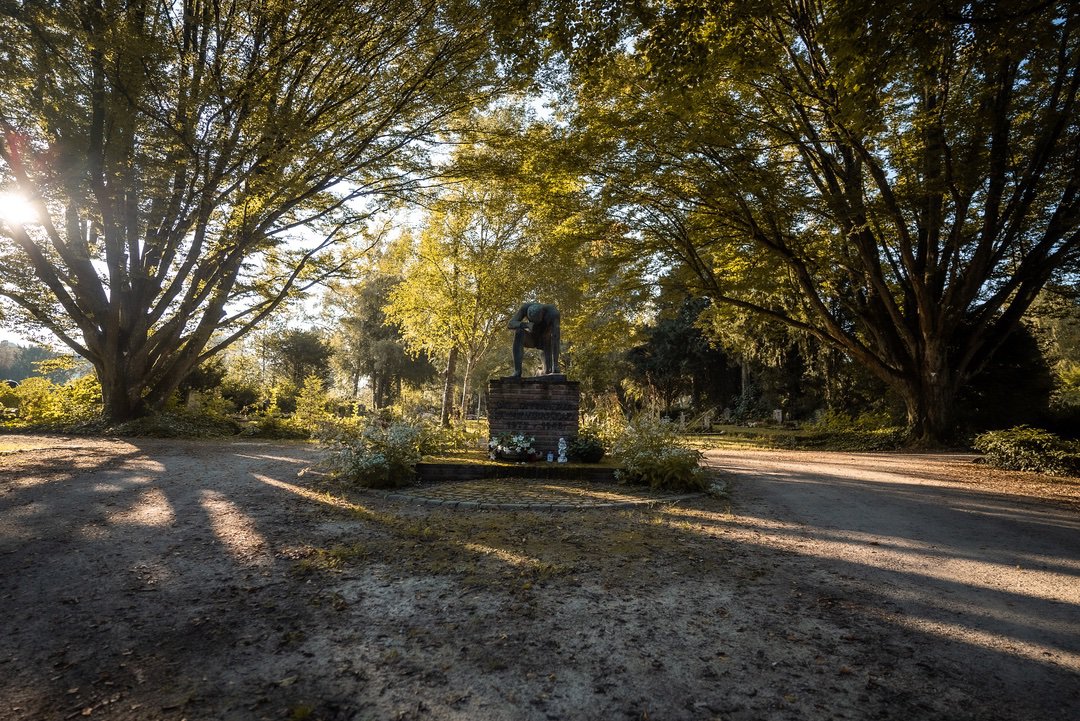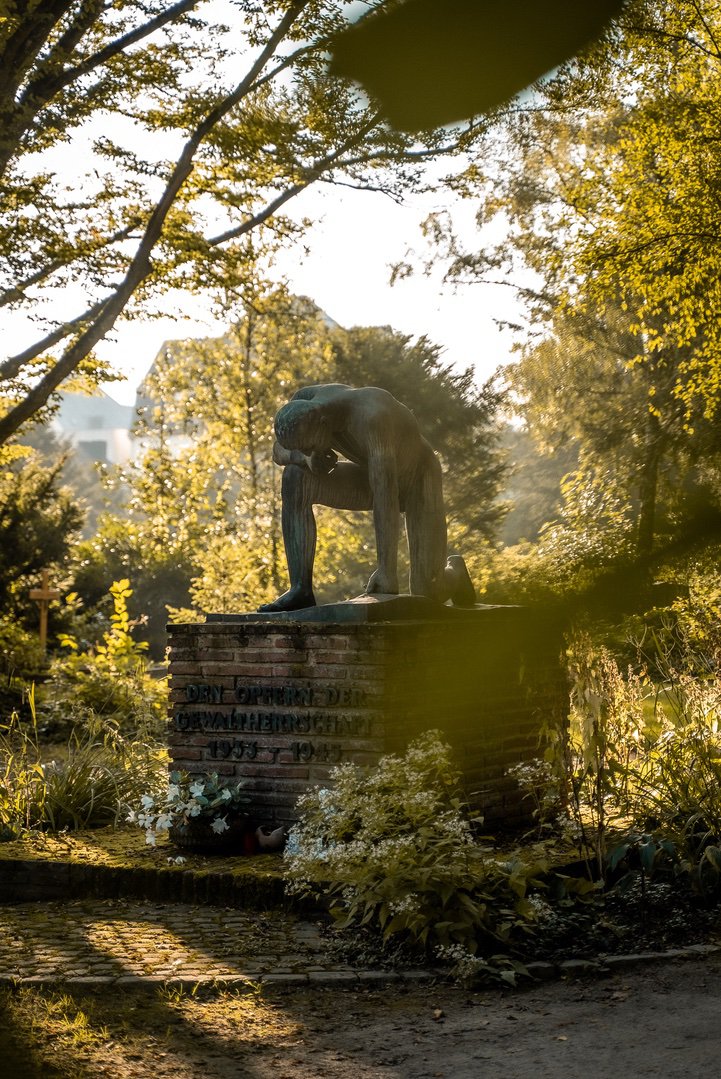Main cemetery
After the old cemetery in Weidegasse had become too small around 1920, the Jewish community bought land from the United Hospices near what was then the main cemetery. After 1933, the National Socialists took possession of part of the large site of 6000 square metres. Today, the Jewish cemetery is part of the main cemetery.
The gravestones are much simpler than the Christian ones in the surrounding area. There is always a Star of David, the date of death and birth of the deceased and a eulogy. The inscriptions are partly in Hebrew and partly in Latin script. Following a Jewish tradition, small stones are often placed on the gravestones. In the past, the dead were always buried directly on site, and if one was in the desert, this had to be done in rock crevices or in small caves. To protect the corpses from wild animals, large stones were rolled in front of them. These small stones are thus intended to pay respect to the Jewish deceased.
As elsewhere in Trier, there are memorials in the main cemetery. One was erected in 1954 by the Jewish community and bears both a German inscription commemorating the dead and a Hebrew text that is much more concise in its statement: "In memory of those murdered during the reign of criminal wickedness from the Holy Community of Trier and the surrounding area. Let all the people hear it and do evil no more in the future". In 1950, the city of Trier announced a competition for a sculpture to commemorate the victims of the tyranny of 1933 to 1945. The competition was won by the Trier sculptor Michael Trierweiler, who created a remarkable sculpture that is one of the most striking in the whole of Trier. It depicts a naked man who sits on his knees and seems to carry all the suffering of the world on his shoulders. His body language is tense and gives the impression that as soon as another idea of a reign of violence arose, he would stand up and stretch his fists in the air.
Author: Bettina Leuchtenberg M.A.
Editorial staff: Prof. Dr. Frank G. Hirschmann
